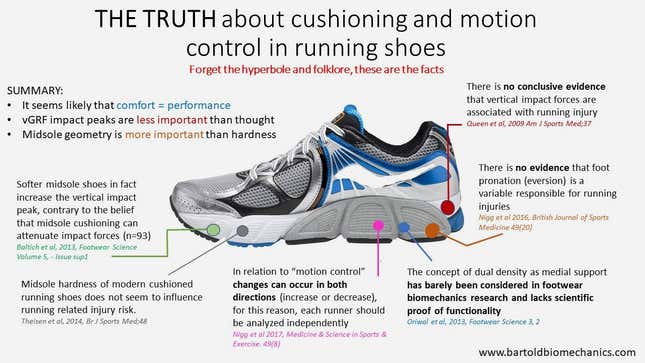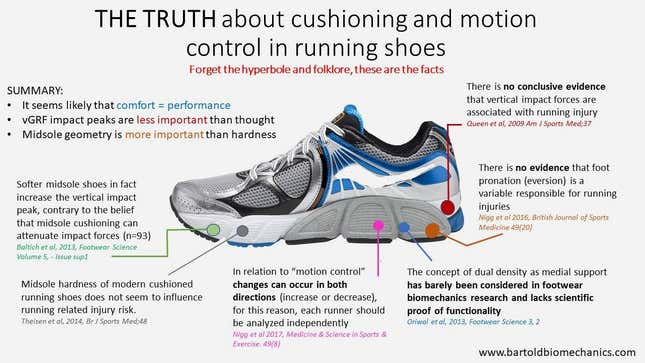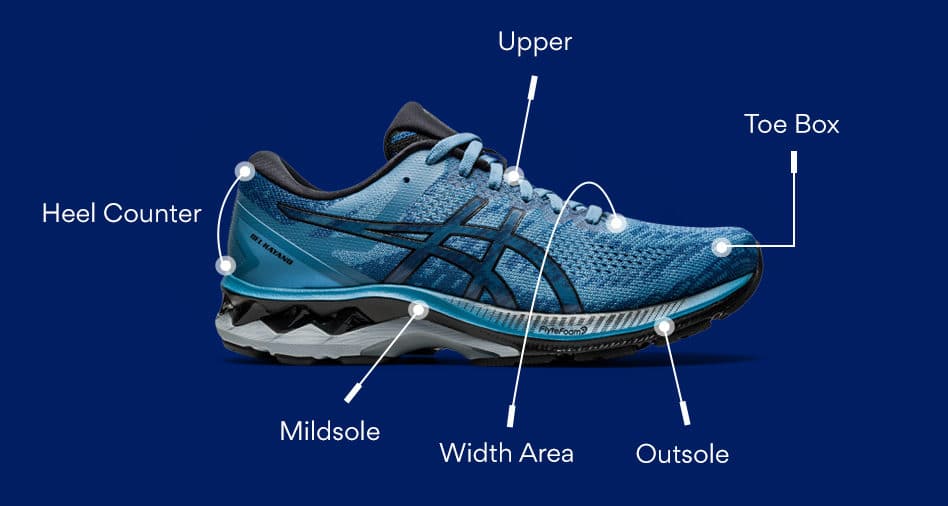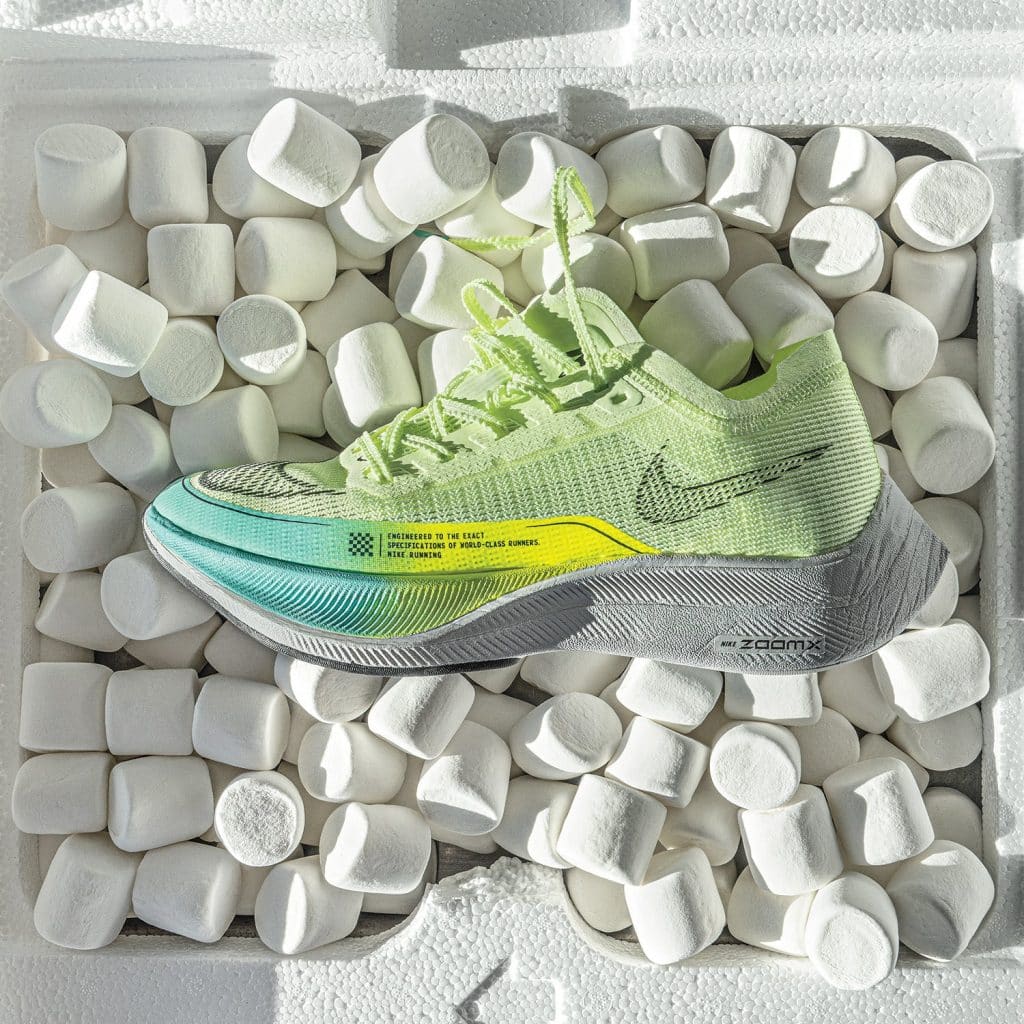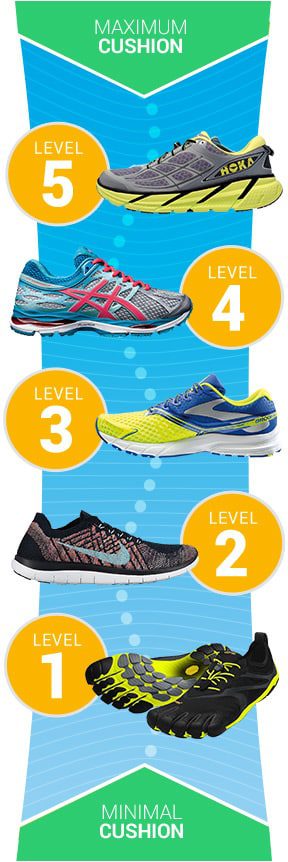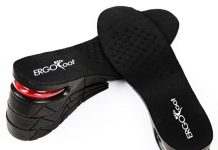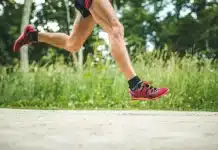When it comes to choosing the right running shoes, there’s one essential factor that should never be overlooked: cushioning.
The importance of cushioning in running shoes cannot be overstated, as it plays a crucial role in providing comfort, protecting your joints from impact, and reducing the risk of injuries.
Whether you’re a seasoned marathon runner or just starting your fitness journey, understanding the significance of cushioning in your running shoes is critical to enhancing your performance and enjoying a pain-free run.
Prevents Impact Injuries
Shock Absorption
When you’re running, your feet and legs experience a significant amount of impact with each step. The cushioning in running shoes is crucial in preventing impact injuries by absorbing the shock generated during foot strikes.
The cushioning materials, such as foam or gel, act as a buffer, reducing the force transferred to your joints and bones.
Reduced Strain on Joints
Cushioning in running shoes helps distribute each step’s impact evenly, thereby reducing the strain on your joints. Joints like the ankles, knees, and hips are particularly susceptible to the repetitive stress of running. The cushioning alleviates some of this stress and helps to prevent conditions such as runner’s knee or stress fractures.
Lower Risk of Stress Fractures
Stress fractures are a common injury among runners, especially those with high-impact running styles or on hard surfaces.
The cushioning in running shoes helps to absorb the shock and decrease the pressure on the bones, reducing the risk of stress fractures. This is particularly important for runners with previous injuries or conditions that make them more prone to this type of injury.
Enhances Comfort
Improved Shock Absorption
One of the critical benefits of cushioning in running shoes is its improved shock absorption. The cushioning materials absorb the impact forces generated when your feet hit the ground, reducing the discomfort and jarring you may experience while running. This increased shock absorption can make your running experience more comfortable and enjoyable.
Reduced Discomfort
Running on hard surfaces or for long distances can often lead to discomfort and fatigue in your feet and legs.
The cushioning in running shoes helps alleviate this discomfort by providing an extra layer between your feet and the ground. It helps to reduce the pressure points and the strain on your foot muscles, allowing you to run for more extended periods without discomfort.
Increased Running Efficiency
When your feet are comfortable and well-cushioned, your running efficiency improves. The cushioning in running shoes helps to reduce the impact and stress on your muscles and joints, allowing you to maintain a more efficient running stride. This, in turn, can lead to improved running performance and increased endurance.
Supports Proper Biomechanics
Maintaining Natural Foot Position
The cushioning in running shoes not only provides comfort but also helps to support proper biomechanics. It helps maintain your foot’s natural position, providing stability and preventing misalignment. This is particularly important for runners with pronation or supination issues, as the cushioning helps correct imbalances and promote proper foot alignment.
Promoting Efficient Stride
A proper running stride is essential for optimal performance and injury prevention. The cushioning in running shoes helps to promote an efficient stride by providing stability and support. It helps to reduce excessive pronation or supination, allowing for a more natural and balanced foot motion during the running gait.
Alignment and Stability
The cushioning in running shoes also significantly provides alignment and stability to your entire body. When your feet are correctly supported and cushioned, it helps to maintain proper alignment of your ankles, knees, and hips. This alignment reduces the risk of overpronation or underpronation-related injuries and improves overall running stability.
Reduces Fatigue
Energy Conservation
Running can be physically demanding, and fatigue is common, particularly during longer runs. The cushioning in running shoes helps to reduce fatigue by conserving energy. With proper shock absorption and support, your muscles work more efficiently, allowing you to go further without excessive fatigue.
Enhanced Running Performance
When fatigue sets in, your running performance tends to suffer. The cushioning in running shoes helps to reduce muscle fatigue, as it absorbs the impact forces and reduces the strain on your muscles.
You can maintain a better running form by reducing fatigue, leading to improved performance and faster times.
Prolonged Endurance
Fatigue is often one of the limiting factors when it comes to endurance activities such as distance running. The cushioning in running shoes is vital in prolonging your endurance by reducing fatigue.
With less strain on your muscles and joints, you can sustain your running effort for more extended, allowing you to push your limits and achieve your running goals.
Protection
Shielding Against External Objects
Running often involves unpredictable terrain, exposing your feet to various potential hazards. The cushioning in running shoes is a protective barrier, shielding your feet from external objects such as rocks, roots, or debris. This protection minimizes the risk of injuries and allows you to run confidently on different surfaces.
Insulation from Weather Conditions
Weather conditions can have a significant impact on your running experience. Cushioning in running shoes provides insulation, protecting your feet from extreme heat or cold. It helps to regulate temperature and keep your feet comfortable, even in challenging weather conditions. This insulation is essential during winter runs or hot summer days.
Minimizing Footwear-Related Injuries
Ill-fitting or inappropriate footwear can cause a range of foot-related injuries. The cushioning in running shoes helps to minimize these injuries by providing cushioning and support to your feet. It reduces the risk of blisters, abrasions, or plantar fasciitis, ensuring you can enjoy your runs without discomfort or pain caused by inappropriate footwear.
Customization and Adaptation
Accommodating Individual Foot Characteristics
Every individual has a unique foot shape and specific biomechanics. The cushioning in running shoes offers customization and adaptation to accommodate these individual foot characteristics. The cushioning materials mold and conform to the shape of your feet, providing a personalized fit and optimal support.
Adjustable Comfort Levels
The cushioning in running shoes allows for adjustable comfort levels. Different shoes may offer different levels of cushioning, catering to individual preferences and needs. Whether you prefer a softer or firmer feel underfoot, the cushioning in running shoes can be customized to provide the comfort level that suits you best.
Versatility for Different Terrains
Running shoes with cushioning are designed to adapt to various terrains and running conditions. Whether running on pavement, trails, or a treadmill, the cushioning in running shoes provides the necessary shock absorption and support for each surface.
This versatility allows you to take your running shoes wherever your adventures lead.
Long-Term Injury Prevention
Aiding in Recovery from Overuse Injuries
Overuse injuries are common in running, often caused by repetitive stress on muscles, tendons, and bones. The cushioning in running shoes aids in the recovery from these injuries by providing additional support and cushioning to the affected areas. It helps to alleviate pain and reduces the strain during the healing process.
Improving Running Mechanics
Poor running mechanics can lead to various injuries and inefficiencies in performance. The cushioning in running shoes can help improve running mechanics by promoting proper foot strike, positioning, and stride length. The cushioning reduces the risk of injuries caused by incorrect running mechanics by facilitating a more natural and efficient running form.
Reducing Muscular Imbalances
Muscular imbalances can develop due to overuse or improper training techniques, leading to increased injury risk. The cushioning in running shoes helps to reduce muscular imbalances by providing adequate support and cushioning to different areas of the foot and leg. It helps distribute the load evenly, reducing the strain on specific muscle groups and preventing imbalances.
Improves Performance
Optimal Power Transfer
The cushioning in running shoes improves performance by optimizing power transfer. With proper shock absorption and support, the cushioning allows for more efficient energy transfer from the muscles to the ground. This enhanced power transfer enables you to generate more force with each stride, improving running performance.
Increased Propulsion
The cushioning in running shoes is crucial in increasing propulsion during running. By absorbing the impact forces and then releasing stored energy, the cushioning materials propel you forward with each step. This increased propulsion helps to improve your running speed and efficiency, allowing you to reach your running goals faster.
Enhanced Running Technique
Cushioning in running shoes can contribute to the enhancement of your running technique. With improved shock absorption and support, the cushioning allows you to maintain a more balanced and efficient running form.
It helps you achieve proper foot strike patterns, develop a smoother stride, and reduce excessive motion, leading to an enhanced running technique.
Balances Impact and Responsiveness
Finding the Right Balance
Cushioning in running shoes helps achieve a balance between impact absorption and responsiveness. Too much cushioning can decrease responsiveness, making it harder to feel the ground and propel forward.
On the other hand, too little cushioning can lead to excessive impact forces and discomfort. The right balance of cushioning allows for optimal shock absorption while maintaining a responsive feel.
Ideal Shoe for Specific Running Goals
Different running goals require different levels of cushioning. For long-distance runners, a shoe with more cushioning can provide comfort and protection during extended periods of running.
For sprinters or those focusing on speed, a shoe with less cushioning may be more appropriate to enhance responsiveness and ground feel. Choosing the ideal shoe with the right level of cushioning aligns with your specific running goals.
Adaptability to Different Surfaces
Whether running on a hard pavement or a soft trail, the cushioning in running shoes adapts to different surfaces. Each surface presents unique impact forces, and the cushioning helps absorb and balance them, allowing for a smooth and comfortable running experience. The adaptability of cushioning ensures that you can confidently conquer any running terrain.
Enhances Shoe Durability
Protection of Shoe Components
The cushioning in running shoes not only protects your feet but also extends the shoe’s lifespan. The cushioning materials act as a buffer, absorbing the impact forces that would otherwise be directly transferred to the shoe components.
This protection helps to prevent premature wear and tear of the shoe, ensuring its longevity.
Prolonged Lifespan
By absorbing impact forces and protecting the shoe structure, the cushioning in running shoes contributes to a prolonged lifespan of the shoe. With less stress exerted on the shoe components, they are less likely to break down or deteriorate quickly.
This durability allows you to get more miles out of your running shoes before replacing them.
Minimizing Wear and Tear
Regular running can take a toll on the soles and midsoles of your shoes, leading to wear and tear. The cushioning in running shoes is a protective layer, minimizing the wear and tear on these parts. It reduces the impact forces and friction, ensuring that your shoes stay intact and in good condition for an extended period.
In conclusion, the importance of cushioning in running shoes cannot be overstated. It provides crucial benefits such as preventing impact injuries, enhancing comfort, supporting proper biomechanics, reducing fatigue, and offering protection.
Additionally, cushioning customization, long-term injury prevention, performance improvement, impact and responsiveness balance, enhanced durability, and adaptability to different terrains make cushioned running shoes essential for any runner.
So, whether you’re a beginner or an experienced runner, choosing the right running shoes with adequate cushioning is a wise investment in your running journey.

